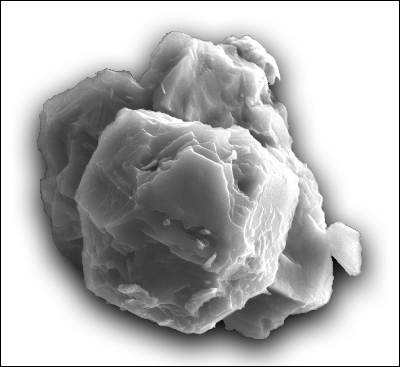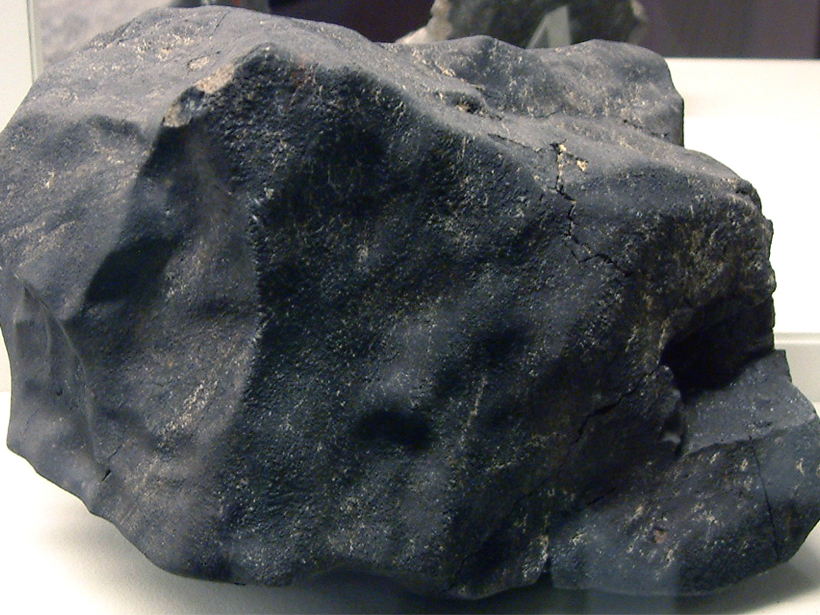Hidden inside the famous Murchison meteorite are motes of stardust older than the Sun. A new analysis measured the ages of these stardust grains, which include the oldest solid material on Earth. The research also has revealed clues about the Milky Way’s past and how dust travels from star to star.
“With stardust, we can trace that material back to the time before the Sun.”
“The most exciting part is to be able to study the star formation history of our galaxy with presolar minerals extracted from Murchison,” said lead researcher Philipp Heck, Pritzker Associate Curator at the Field Museum of Natural History in Chicago. “Stardust is the oldest material to reach Earth, and from it, we can learn about our parent stars, the origin of the carbon in our bodies, the origin of the oxygen we breathe,” he added in a statement. “With stardust, we can trace that material back to the time before the Sun.”
The Dust of Stars, Literally
How does stardust form, and how does it find its way into a meteorite bound for Earth? The process begins, as the name suggests, inside a star.

Just before it dies, a star whose mass is less than 10 times that of the Sun will have layers like an onion. The layers—made of carbon, oxygen, helium, and hydrogen—are either fusing new elements or collapsing under their own weight. At this stage of a star’s life, known as the asymptotic giant branch (AGB), the very top layers of the star’s atmosphere are cool enough for dust to condense. That is stardust.
During the last 100,000 years of its life, the AGB star will puff out its atmosphere to create a beautiful planetary nebula. Some of the stardust, propelled by the nebula’s expansion, will flow farther outward.
Stardust made up a tiny percentage of the interstellar soup that birthed our solar system. Less than 200 parts per million survived to be incorporated into the Sun, planets, comets, and asteroids.
And, in 1969, a 100-kilogram chunk of one carbonaceous chondrite bore some of that stardust to Murchison in Victoria, Australia.
As Old As Dust
Researchers ground down a small part of the meteorite into a fine powder and separated the stardust from the solar system dust by their chemical compositions. They then measured the ages of the microscopic particles by determining how long the grains had been exposed to high-energy galactic cosmic rays.
Exposure to high-energy cosmic rays changes the surfaces of dust grains traveling through the galaxy. Grains are more heavily coated with the isotopes helium-3 and neon-21 the longer they exist outside the solar system. (The Sun’s magnetic field shields the grains once they arrive.)

About 60% of the newly discovered grains predate the solar system by only 300 million years. Adding the age of the Sun, the presolar age of the grains, and the time it takes a star to reach the AGB stage, this dating suggests that the stars that made these grains were born about 7 billion years ago.
Moreover, the team estimates that the stars that made these grains must have been between 2 and 3 times the mass of the Sun. Smaller stars wouldn’t have reached the AGB stage before the solar system formed, and the radiation from larger stars would have prevented the grains from growing as big as they did, the team argues.
Some of the grains show signs that they traveled the galaxy in large clusters, which is consistent with observations of objects like the Egg Nebula, said coauthor Jennika Greer, a graduate student researcher at the Field Museum. In addition, 8% of the grains dated in the study are more than a billion years older than the Sun. One grain is more than 3 billion years older than the Sun, which, at more than 7 billion years, makes it the oldest solid material on Earth.
These results were published in Proceedings of the National Academy of Sciences of the United States of America on 13 January.
Piecing Together Galactic History
Astronomers are still trying to figure out how often the Milky Way forms stars and whether the rate is constant or whether it fluctuates. Previous studies, some based on theory and some on observations, have pointed to a period of slightly enhanced star formation about 7 billion years ago.
“Our age distribution also supports a heterogeneous star formation rate, something that is supported in high-resolution models,” said Greer. “With presolar grains, we can analyze objects, like stars and supernovae, and events, like star formation, not normally accessible by laboratory studies.”
“I believe we will be able to resolve discrete events in our galaxy…much like that in zircon geochronology for solar system and terrestrial samples.”
“An amazing aspect of this finding is that it is based on direct measurement of decay products, while generally the evidence…is based on indirect chronological methods, which are ultimately linked to a stellar model or statistical assumptions,” Helio Rocha-Pinto told The Guardian. “Yet they are the main tools we have for dating stars since we cannot take them to the laboratory.” Rocha-Pinto, an astronomer at Observatório do Valongo at the Federal University of Rio de Janeiro in Brazil, was not involved with this research.
This project analyzed 40 presolar grains from the meteorite. “We have already started separating more large, datable presolar grains from Murchison,” Heck said. The researchers hope that future grains will have ages that let them look further back in time.
“With more ages,” Greer added, “I believe we will be able to resolve discrete events in our galaxy in addition to our evidence for one period of increased star production, much like that in zircon geochronology for solar system and terrestrial samples.”
—Kimberly M. S. Cartier (@AstroKimCartier), Staff Writer
Citation:
Cartier, K. M. S. (2020), Dust older than the Sun sheds light on galactic history, Eos, 101, https://doi.org/10.1029/2020EO139107. Published on 23 January 2020.
Text © 2020. AGU. CC BY-NC-ND 3.0
Except where otherwise noted, images are subject to copyright. Any reuse without express permission from the copyright owner is prohibited.
Text © 2020. AGU. CC BY-NC-ND 3.0
Except where otherwise noted, images are subject to copyright. Any reuse without express permission from the copyright owner is prohibited.

